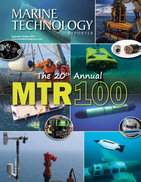Douglas-Westwood (DW) has recently updated its work-class remotely operated underwater vehicle (ROV) outlook and sees potential for nearly 7.5% compound annual growth in expenditure from 2016 to 2020.
This is function of recovery in the IRM, drill-support and construction support markets (which employ just over 900 Work ROV units), all of which have been impacted by the downturn.
Operating through the downturn has been a challenge for many ROV/vessel companies. We have seen distressed sales of units and expect more to come. Price pressure on the vessel contractors has reduced margins dramatically. Uptime of the vessel becomes highly critical – a few lost-days of vessel availability means the difference between a small margin or a loss on the project.
Moray Melhuish of ROV specialists ROVOP made this point in his address at the SMM Conference in Hamburg last week, highlighting that ROV technology is moving forward rapidly and a young fleet of units with modern (and manufacturer-supported) equipment and controls is key to ensuring uptime.
Some of the technology drivers in the industry include the adoption of sonar and HD cameras and the ability to work in turbulent shallow-waters (to service the growing offshore wind market).
Like many other areas of the offshore market, footprint on the vessel (or platform) is also critical and development of electric tooling has the potential to reduce this, or allow the ROV to carry a greater payload.
Cost-efficient project development is of paramount importance to E&P companies and we continue to see projects re-evaluated and re-tendered. We are tracking this on a project-by-project basis and are already seeing the impact (in development costs/bbl capacity) for newly sanctioned projects.
 August 2025
August 2025


